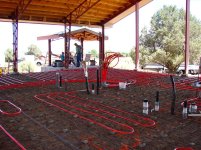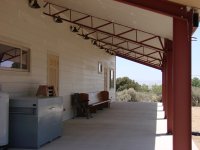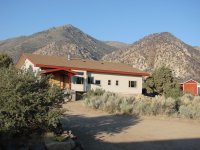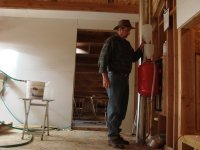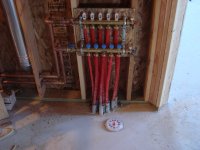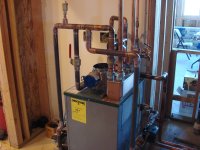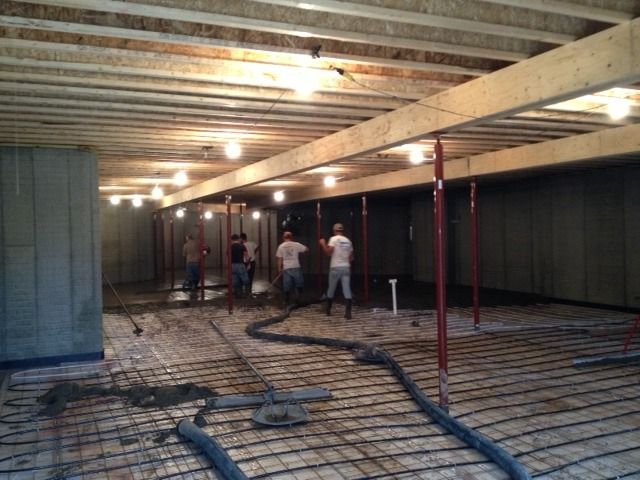I have a closed loop radiant system. A circulator sends water to any of four manifolds, each with a number of loops, that represent four thermostat areas. All circulation goes through the floor loops and through a heat exchanger. I can add heat the other side of the heat exchanger from the solar panels or I can add heat to the floor loop by turning on the boiler and burning oil. The solar is the primary heat source and the oil cannot run until the solar is cold.
Two thermostats in each zone control the system. A solar thermostat calls for heat and can only get it from the solar, so in affect, it becomes a storage thermostat. The other thermostat cannot work until the solar thermostat has no more useful heat to deliver (a threshold temp on the storage tanks determines this) or it has reached it's et temp. I have 360 gallons of water storage. My water storage is pretty small, but the slab will be a huge part of the overall picture. These water storage tanks are full of pressurized domestic drinking water, so in affect we have 360 gallons of hot drinking water that can go to space heating or showers.
The main idea is that the slab will be at a minimum threshold temp most of the time and the solar will bring it up a bit during the day. Then the backup storage water will be used, and finally the oil, if needed. During the coldest months, some areas will be turned way down to minimize the heat demand. This might be the extra bedroom or the garage.
The collectors have a drainback system for freeze protection. They only have water in them when actually collecting and otherwise drain back to a holding tank. This is the best freeze protection system and is pretty much fool proof.
There are two very important considerations when designing a solar system. If these are followed, you will have good success. Number 1: Decide on the freeze protection system. Number 2: Design the system to be the most effective collector cooling system you can. Don't worry about achieving high temperatures, worry about cooling the panels. Cooling the panels affectively removes the maximum amount of energy and that energy goes into your storage system.
This winter I have decided to heat with only solar. Winter is coming and I'm not done with the house. Further, I don't have the oil tanks installed and don't want to pay for oil. The solar will be doing the whole job. For this season I'm going to hook up the panels in a temporary way and get it running in the next couple of days.
This whole thing is designed to be as simple as possible while being as foolproof as possible and to use the least amount of oil possible. The whole radiant system is non pressurized and not connected to our water system. The solar panels only have water in them when collecting and cannot freeze. The solar water is not the radiant water and neither one is the drinking water.
The boiler is a 400 pound cast iron unit set in the laundry room. Every time there is a call for oil heat it must be warmed up. So I included it in the solar loop. It becomes part of the solar storage and is warm and waiting if needed. It's waste heat is what keeps the laundry room warm. This is an old fashioned boiler. But by adding solar pre-heat, a vent damper, oversizing the boiler itself while undersizing the burner, I have raised it's efficiency to well over 85% while keeping it a very simple and reliable design that only runs when the solar is not enough.
I'll post some more pix tomorrow or Sunday. Today we got most of the collector mounting system ready. My goal is to be heating on Monday.
